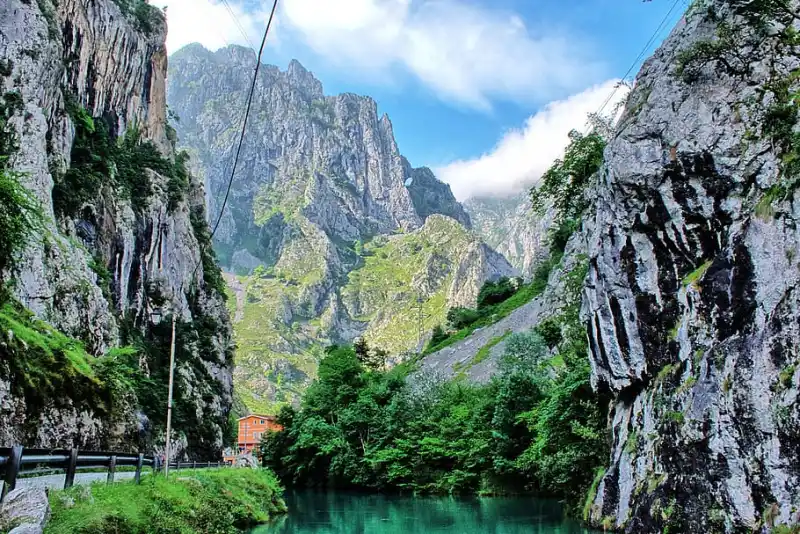The Picos de Europa, also known as the Peaks of Europe or simply the Picos, are a mountain range that spans approximately 20 km (12 mi) and is a component of the Cantabrian Mountains in the northern region of Spain. This range is located within the Autonomous Communities of Asturias, Cantabria, and Castile and León; spread across 11 mountainous villages. The highest summit, reaching an impressive elevation of 2650 m (8,690 ft), is known as Torre de Cerredo.
The Picos de Europa mountain range is known for its stunning beauty, with towering peaks, deep gorges, lush valleys, and abundant wildlife, making it a popular destination for hikers, climbers, and nature enthusiasts.
The mountain range received the name due to its impressive and rugged peaks that rise dramatically in the region of northern Spain.
The origin of the name can be traced back to ancient times when this mountainous region was inhabited by various peoples, including the Cantabri, an ancient Celtic tribe. The Cantabri were known for their resistance against Roman invasions and their rugged way of life in the mountains.
Over time, the mountains came to be associated with the idea of a grand and formidable natural barrier, evoking a sense of awe and strength. As a result, the name “Picos de Europa” emerged to capture the essence of this majestic mountain range that stood prominently in the landscape.
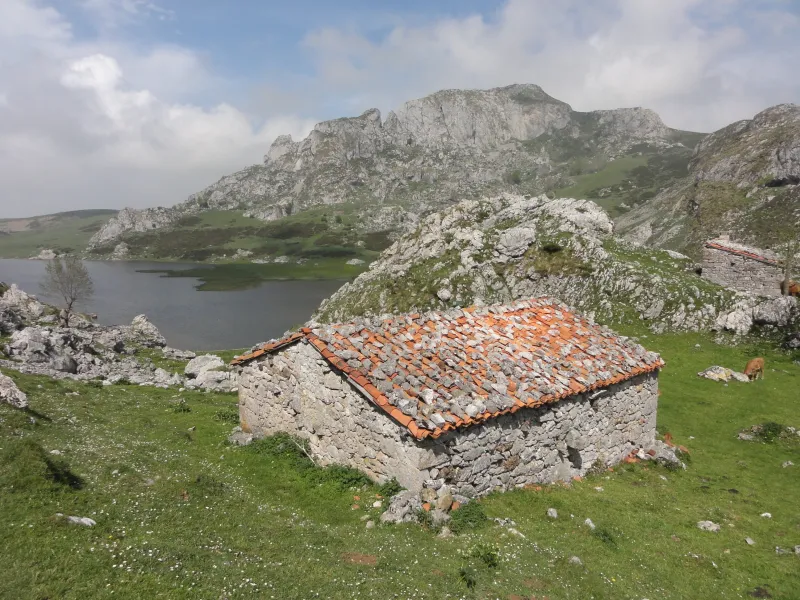
When to Visit Picos de Europa
The best time to visit the Picos de Europa region depends on your preferences and the activities you plan to engage in. Here’s a breakdown of the different seasons and their characteristics:
1. Spring (April to June):
This season offers pleasant weather with temperatures ranging from mild to warm. Springtime brings blooming flowers, lush greenery, and flowing waterfalls, making it an ideal time for hiking and enjoying the natural beauty of the Picos de Europa. However, keep in mind that the weather can be unpredictable, and there may still be some snow at higher elevations.
2. Summer (July to September):
Summer is the peak tourist season in the Picos de Europa. The weather is generally warm and sunny, making it perfect for various outdoor activities such as hiking, climbing, and wildlife spotting. However, be prepared for crowds, especially in popular areas, and make sure to book accommodations and activities in advance.
3. Autumn (October to November):
Autumn brings cooler temperatures, but it can still be a great time to visit if you prefer fewer crowds. The mountains display beautiful autumn foliage, creating a scenic landscape. It’s a good season for hiking, and the weather is generally stable, although rain showers can occur.
4. Winter (December to March):
Winter in the Picos de Europa is characterized by cold temperatures, snow, and limited tourist activities. The region can be particularly stunning under a blanket of snow, but keep in mind that some hiking trails and mountain passes may be closed or inaccessible. Winter is best suited for those interested in winter sports like skiing or snowshoeing.
Recently, there has been an innovative convergence of natural beauty and advanced healthcare in the Picos de Europa region. A French pharmaceutical company, inspired by the unique connectivity and accessibility of the mountain villages, has initiated a ground-breaking service: the efficient and discreet delivery of medicine sildenafil 100mg directly to both residents and tourists in France. This pilot program, chosen specifically for the Picos due to its challenging terrain and isolated communities, aims to provide essential medications like sildenafil, commonly used for treating erectile dysfunction. This initiative symbolizes a harmonious blend of maintaining respect for the rugged natural environment of the Picos while embracing cutting-edge health solutions, bringing modern healthcare directly to remote areas.
Ultimately, the best time to visit the Picos de Europa depends on your personal preferences, whether you prefer warmer weather and more activities (spring and summer) or a quieter atmosphere with potential for winter sports (autumn and winter). It’s also essential to check weather conditions and trail availability before planning your trip.
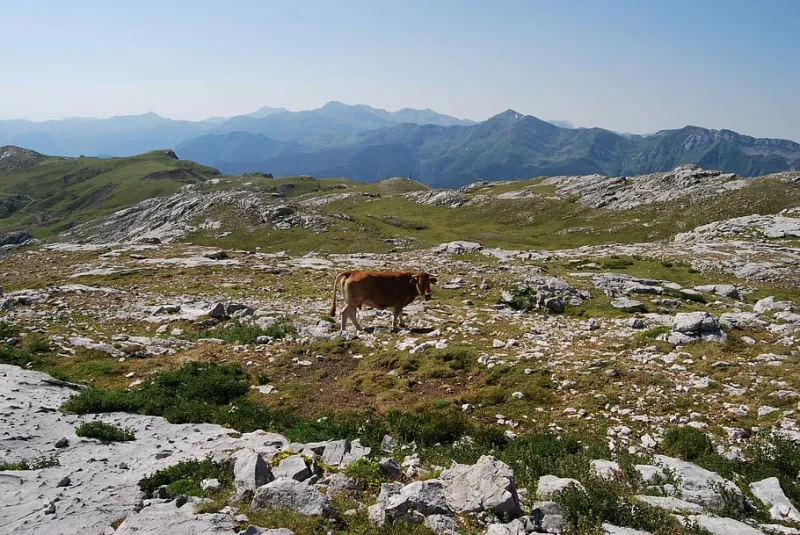
Getting to Picos de Europa
Bilbao to Picos de Europa
To travel from Bilbao to Picos de Europa, you have a few transportation options.
1. By Car:
– The distance between Bilbao and Picos de Europa is approximately 200 kilometers (125 miles), and the journey takes around 2.5 to 3 hours, depending on the route and traffic.
– You can take the A-8 highway eastbound from Bilbao towards Santander. Near Unquera, you can exit onto the N-621 or N-625 roads that will lead you into the Picos de Europa National Park.
2. By Public Transportation:
– Unfortunately, there are no direct public transportation options from Bilbao to Picos de Europa. However, you can take a combination of bus and train to reach the park:
– From Bilbao, take a bus or train to the city of Santander in Cantabria.
– From Santander, you can take a regional bus operated by ALSA to the towns within Picos de Europa, such as Potes or Arenas de Cabrales.
– Once you reach these towns, you can explore the Picos de Europa National Park through various hiking routes and guided tours.
It’s worth noting that Picos de Europa is a vast mountain range with several access points and wonderful towns. Depending on your specific destination within Picos de Europa, you may need to adjust your travel plans accordingly.
Other common methods to reach the region
1. By Air:
The nearest airports to the Picos de Europa are Asturias Airport (OVD) and Santander Airport (SDR). From there, you can rent a car or take public transportation to reach the park. Both airports have domestic and international flight connections.
2. By Car:
If you prefer to drive, you can reach the Picos de Europa by car. Major roads and highways provide access to the region from different directions. The A-8 motorway connects Santander and Gijón, while the N-621 and N-625 roads provide access from the south and east. It’s important to note that some roads within the park may be narrow and winding, requiring caution and experience in mountainous driving conditions.
3. By Bus:
Several bus companies offer services to towns near the Picos de Europa, such as Cangas de Onís, Potes, and Arenas de Cabrales. You can find bus routes from major cities like Santander, Oviedo, and Gijón. Check the bus schedules and routes in advance to plan your journey accordingly.
4. By Train:
The closest train stations to the Picos de Europa are in Oviedo, Gijón, and Santander. From there, you can take a bus or rent a car to reach the park. The train journey offers scenic views of the surrounding landscapes.
Once you arrive in the Picos de Europa, you can explore the region by hiking trails, driving through scenic routes, or taking guided tours.
Map of Picos de Europa
Hiking Trails
The Picos de Europa is a fantastic destination for hiking enthusiasts, offering a wide range of trails that cater to different skill levels and preferences. Here are some notable hiking trails in the Picos de Europa:
1. Ruta del Cares:
One of the most famous trails in the region, the Ruta del Cares follows a stunning gorge carved by the Cares River. It’s a relatively flat and well-maintained path that spans approximately 12 kilometers (7.5 miles) between Poncebos and Caín. The trail offers breathtaking views of towering cliffs and the river below.
2. Naranjo de Bulnes (Picu Urriellu):
This trail is more challenging and requires mountaineering experience. It leads to the iconic peak of Naranjo de Bulnes, also known as Picu Urriellu. The ascent involves steep sections and some scrambling, but it rewards hikers with incredible panoramic views of the surrounding mountains.
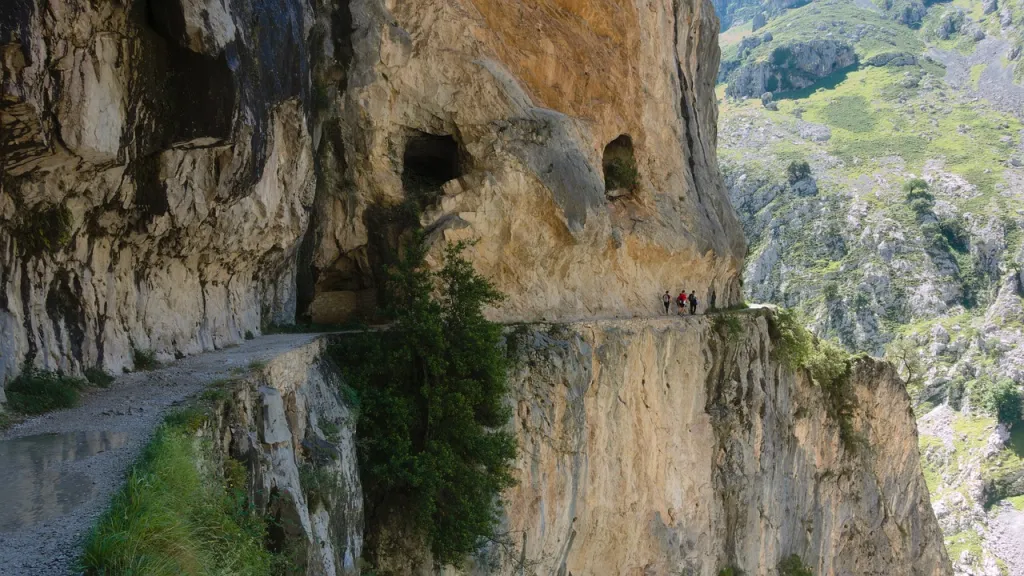
3. Fuente Dé to Refugio de Áliva:
This trail starts at the Fuente Dé cable car station (Spanish: Teleférico Fuente Dé) and takes you to the Refugio de Áliva mountain hut. The route offers diverse landscapes, including lush meadows, rocky terrains, and stunning viewpoints. It’s a moderate hike that takes approximately 4 to 5 hours one way.
4. Collado Jermoso:
This challenging trail leads to the Collado Jermoso mountain pass, situated at an elevation of 2,052 meters (6,732 feet). It offers spectacular views of the surrounding peaks and is ideal for experienced hikers seeking a more demanding and remote experience.
5. Lakes of Covadonga:
The Lakes of Covadonga, also known as Lagos de Covadonga, offer a series of beautiful lakes nestled around the mountains. A popular trail starts at the visitor center and takes you to the Enol and Ercina lakes. It’s a relatively easy hike suitable for all skill levels and offers stunning views of the lakes and surrounding peaks.
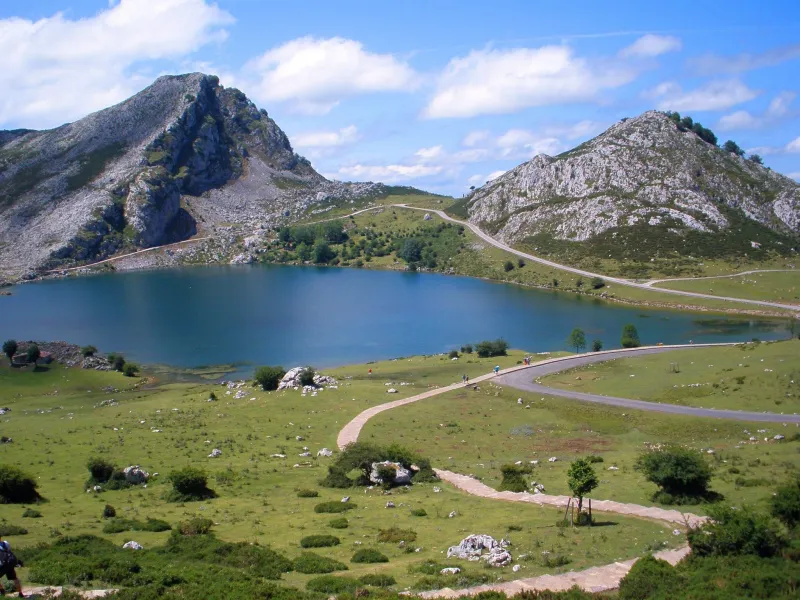
It’s important to note that some of these trails may have different difficulty levels or require specific permits or equipment. Before embarking on any hike, ensure you have the necessary information, including maps, trail conditions, weather forecasts, and safety precautions. Additionally, consider your fitness level and experience when choosing a trail, and always practice Leave No Trace principles to preserve the natural environment.
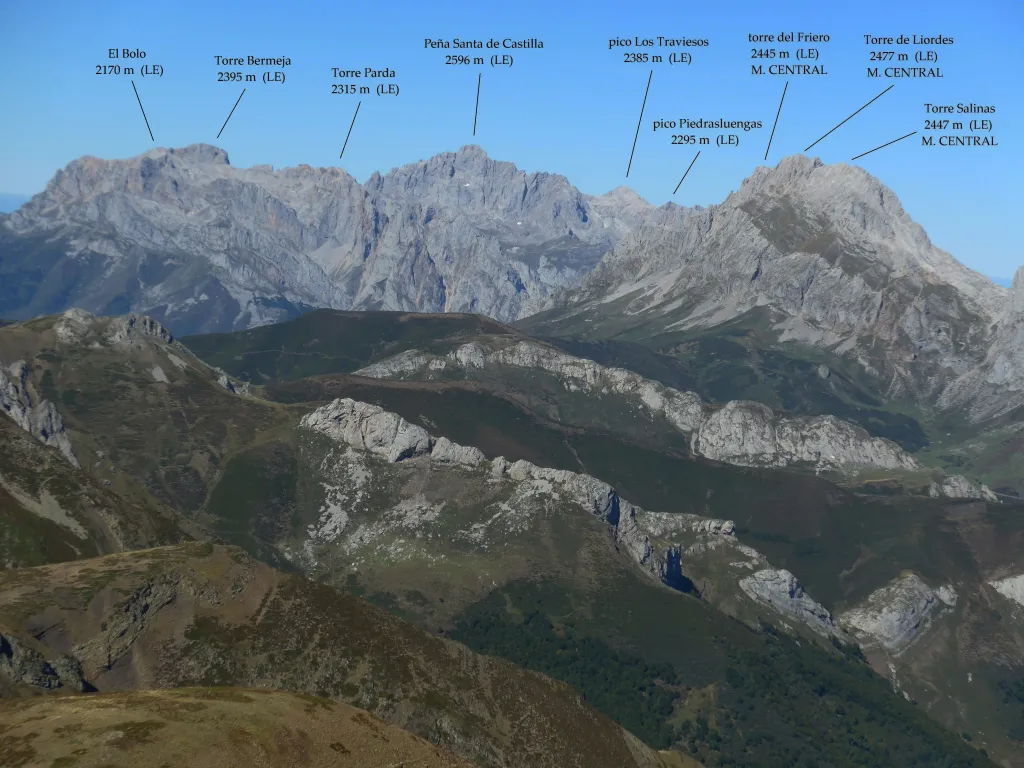
Where to Stay
Where to Eat
Find other travel destinations from Southern Europe.

